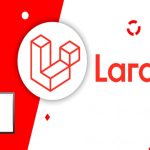Object Oriented Programming
What is object-oriented programming (OOP)?
Object-oriented programming (OOP) is a computer programming model that organizes software design around data, or objects, rather than functions and logic.
An object can be defined as a data field that has unique attributes and behavior.
OOP focuses on the objects that developers want to manipulate rather than the logic required to manipulate them. This approach to programming is well suited for software that is large, complex and actively updated or maintained. This includes programs for manufacturing and design, as well as mobile applications. For example, OOP can be used for manufacturing system simulation software.
Basic features of SPM
- Emphasis on doing algorithms.
- Large Programs are divided into smaller programs known as Functions
- Most of the function shares global data.
- Data move around the system globally from function to function.
- Function transfers the data from one form to another.
- Employs top-down approach of Programming
Example: C, Pascal, FORTRAN
Problems with Structured Programming Methodology (SPM)
- Reach their limit when project becomes too large.
- Large program became more complex.
- Functions have unrestricted access to global data.
The striking features of OOP
- Emphasis on data rather than the procedure.
- Programs are centered on objects.
- Data are hidden and can’t be accessed by external functions
- Object may communicate with each other through methods (functions).
- New data & functions can be easily added whenever necessary.
Concepts of OOP
- Object
- Class
- Methods
- Instance Variables (Properties)
01. Object
- Real world entity.
- Bundle of related variables and functions (also known methods).
- Objects share two characteristics:
- Properties / State
- Method / Behavior (Functionalities)
Two characteristics of Object
- Objects share two characteristics:
- Properties / State
- State is a well-defined condition of an item.
- A state captures the relevant aspects of an object
- Method / Behavior (Functionalities)
- Behavior is the observable effects of an operation or event
Example
Object: House
States: Color and Location
Behaviors: Close/open doors
02. Class
A class can be defined as a template/blueprint of an object that describes the behaviors/states that object.
Detailing Objects
Account:
Has : A/C Number, Balance, Opening Date, Account Holder details
Does: Deposit money, Withdraw money
Employee
Branch:
Has: Name, Location, No of accounts
Does: Create new accounts, make transaction
Employee:
Has: name, id, email, salary
Does: Handle banking transactions
Account Holder:
Has: name, contact
no, accounts
Does: Handle banking transactions
Basic concepts of OOP
- Object
- Class
- Methods
- Instance Variables
Object
- Real world entity.
- Bundle of related variables and functions (also known methods).
- Objects share two characteristics:
- Properties / State
- Method / Behavior (Functionalities)
Class
A class can be defined as a template/blueprint of an object that describes the behaviors/states that object.
Methods
- A method is basically a behavior.
- A class can contain many methods.
- It is in methods where the logics are written, data is manipulated and all the actions are executed.
Instance Variables
Each object has its unique set of instance variables.
Such as,
A Box can have Height, Width, Depth.
These are the Instance variables of that box.
An object’s state is created by the values assigned to these instance variables.
Basic Features of OOP
- Abstraction
- Encapsulation
- Polymorphism
- Inheritance
Inheritance
- Inheritance is when an object acquires the property of another object.
- Inherited class is called as parent class or super class or base class
- Class that inherits a parent class is called as child class or sub class or derived class
Thank You!






Leave a Reply